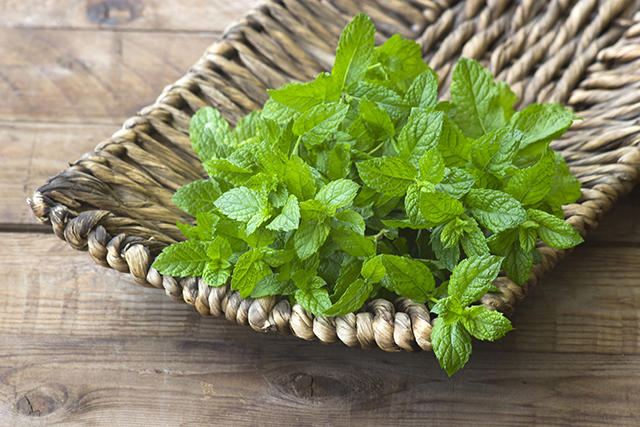Antibacterial activity of Mentha spicata (spearmint) leaves and infusion
02/21/2018 / By Janine Acero

A study published in the Journal of Environmental Science, Toxicology and Food Technology found that spearmint (Mentha spicata) leaves and infusions have antibacterial properties after sampling fresh, dry loose and packed forms. Moreover, the study revealed that spearmint essential oil is especially potent against food-borne pathogenic bacteria associated with outbreaks.
- The samples were analyzed for their moisture content, microbiological and aflatoxin (poisonous carcinogens) activity, as well as the antibacterial property of its essential oils.
- The findings suggest that spearmint essential oil has potent antibacterial activity against food-borne pathogens such as Staphylococcus aureus, Bacillus cereus, Salmonella spp and Escherichia coli.
- According to the study, the antibacterial activity of M. spicata essential oil could be attributed to the presence of carvone and limonene. Carvone has been known to possesses decongestant, diuretic, antiviral, and tonic biological properties, while limonene – a chemical found in citrus fruit peels – is used in medicine to treat bronchitis and promote weight loss.
- The study further revealed that loose leaves contained the most microbial load, while fresh leaves contained the lowest molds and yeasts count, spore-forming bacteria, E. coli and
B. cereus, while Salmonella spp, Shigella spp, Clostridium perfringens, and S. aureus were not detected. - In addition, fresh leaves and infusion samples were not found to contain aflatoxins.
The study concluded that M. spicata dry leaves showed high aflatoxin contamination levels compared with fresh leaves and infusions. Moreover, the essential oil has remarkable antibacterial activity against pathogenic bacteria commonly found in contaminated food.
Find the full text of the study at this link.
Journal reference:
Guirguis EAH. COMPARATIVE STUDY ON THE QUALITY AND ANTIBACTERIAL ACTIVITY OF SPEARMINT (MENTHA SPICATA) LEAVES AND INFUSION. IOSR Journal of Environmental Science, Toxicology and Food Technology. 2017;11(03):45–50. DOI: doi.org/10.9790/2402-1103024550
Tagged Under: antibacterial, antibacterial properties, benefits of essential oils, essential oils, herbal medicine, spearmint essential oil, spearmint leaves




















